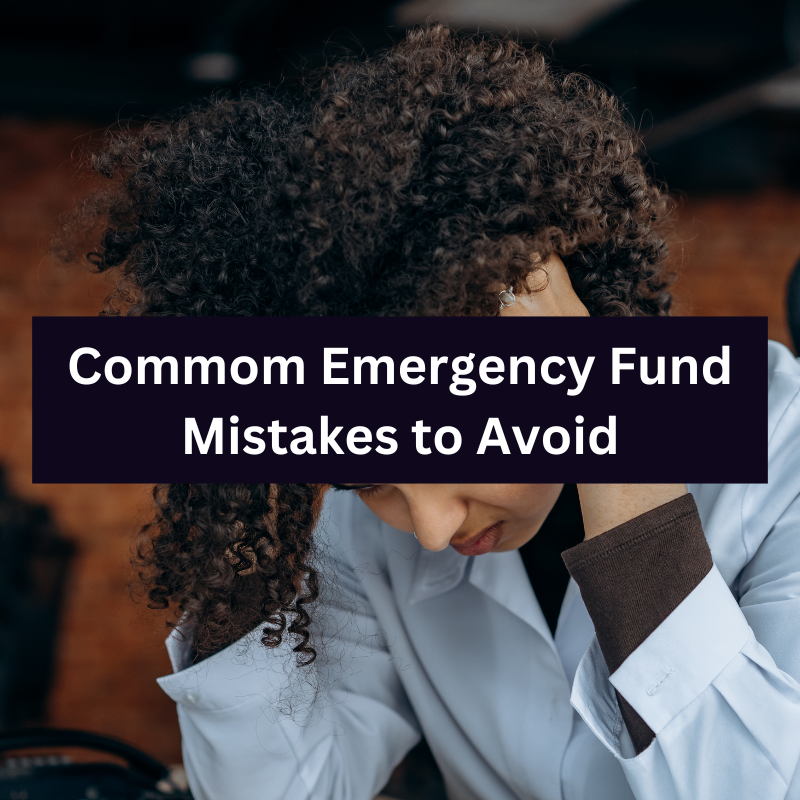Building an emergency fund is an essential step towards financial stability. It can provide a safety net during difficult times, such as unexpected medical bills, job loss, or a natural disaster. However, there are some common mistakes that people make when building their emergency fund.
In this blog post, we’ll discuss these mistakes and how to avoid them.
Mistake #1: Not having an emergency fund at all
One of the most significant mistakes people make is not having an emergency fund at all. It’s easy to put off saving for a rainy day, especially when you have other financial priorities. However, emergencies can happen at any time, and having an emergency fund can provide you with financial security.
To avoid this mistake, make saving for an emergency fund a priority. Start small by setting aside a small amount each month, and gradually increase the amount as you’re able to. Even a few pounds a week can add up over time and provide a cushion for unexpected expenses.
Mistake #2: Not saving enough
Another common mistake is not saving enough. It’s recommended that you have at least three to six months’ worth of living expenses saved up in your emergency fund. This should cover essential expenses such as rent/mortgage, utilities, food, and transportation. If you’re not sure how much you need, take a close look at your budget and determine your essential expenses.
To avoid this mistake, start by setting a savings goal for your emergency fund. Break it down into smaller, achievable milestones, such as saving £500 in the first month, £1000 in the second month, and so on. By setting realistic goals, you’ll be more likely to stay motivated and save enough to meet your emergency fund needs.
Mistake #3: Dipping into your emergency fund for non-emergencies
It can be tempting to use your emergency fund for non-emergencies such as a holiday or a shopping spree. However, it’s important to remember that your emergency fund should be reserved for unexpected expenses only. If you’re dipping into your emergency fund for non-emergencies, you’re putting your financial security at risk.
To avoid this mistake, create a separate savings account for non-emergency expenses, such as a holiday or a new car. This way, you can save for these expenses without putting your emergency fund at risk.
Mistake #4: Not replenishing your emergency fund
If you do have to use your emergency fund, make sure to replenish it as soon as possible. Otherwise, you’ll be left vulnerable if another emergency arises. Failing to replenish your emergency fund can also create a cycle of debt, as you may have to turn to credit cards or loans to cover unexpected expenses.
To avoid this mistake, make replenishing your emergency fund a priority. Create a plan to rebuild your emergency fund as soon as possible after you’ve used it. Consider setting up automatic savings transfers to help you reach your savings goals more quickly.
In conclusion, building an emergency fund takes time and effort, but avoiding these common mistakes can help you save effectively and provide you with financial security. Make saving for an emergency fund a priority, save enough to cover essential expenses, avoid using your emergency fund for non-emergencies, and replenish your emergency fund as soon as possible. By following these tips, you’ll be well on your way to building a strong emergency fund that can provide you with peace of mind during difficult times.

